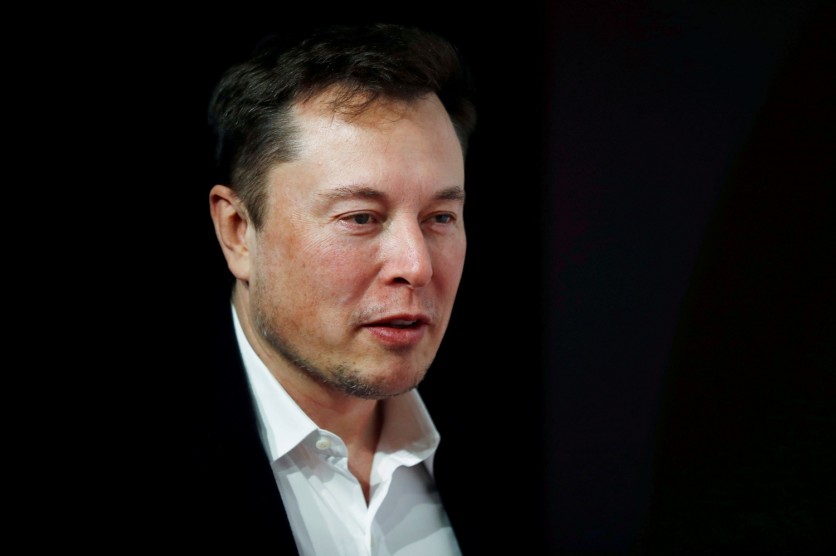Elon Musk has attracted controversy and made headlines for all the wrong reasons in the past. Still, he's also had some exceptional fulfillment in fast-pacing technology.
For all his strange behavior, he's also running to solve some of humanity's most dire problems. Climate change? Musk's electric vehicle company, Tesla, has made electric motors exciting. Traffic woes and all of the bad health outcomes of congestion-triggered pollution? Musk created The Boring Company to dig a community of tunnels underneath Los Angeles to avoid gridlocked freeways. Is he colonizing other planets to keep ourselves from extinction? SpaceX is running on it.
Here are the ways he's "saving" the world:
SpaceX's new planet-spying space-based telescopes

SpaceX CEO Elon Musk told scientists Monday that he'd want to collaborate with astronomers on seeing deeper into space. Musk said he wanted to get clearer pictures of exoplanets that might host life, CNET reported.
"I'm very excited about a future of space-based telescopes that could be very large," Musk told a committee of the National Academies of Sciences, Engineering, and Medicine.
The committee assembly was a part of decadal survey where NASA, other government agencies, and scientists try to set priorities for astronomical and astrophysics research. Musk was invited to deal with concerns approximately interference from large satellite constellations like Starlink.
The billionaire entrepreneur said that "VisorSat" satellites ready with a sunshade to block reflections from the sun are a possible fix. The glint makes the satellites bright sufficient to peer from Earth and has marred a few astronomical observations over the past year. Musk stated the following release of Starlink satellites should be ready with the dimming devices.
"We will take further steps as needed," Musk assured the audience of scientists, adding that the fix is "quite simple" and "we'll feel a bit silly in hindsight."
Tesla's Own Traffic Light?
Tesla is rolling out a software update to a number of its newest cars that will allow them to peer and respond to traffic lighting fixtures and forestall signs. The said feature has been a feature that CEO Elon Musk has teased for years.
According to The Verge, the update is available only to proprietors of Tesla vehicles ready with the third version of the onboard laptop that powers Autopilot, which it refers to as "Hardware 3." The company has started putting in this laptop on all new vehicles last year (and offers improvements to those with older cars). However, owners will also pay for the "full self-driving" version of Autopilot to apply the new "Traffic Light and Stop Sign Control" feature.
When activated, the feature will slow the auto right down to a forestall for traffic lights and stop signs. The driving force will have to drag down once at the Autopilot stalk or tap the accelerator pedal to continue by the intersection after that - although the signal light is green. Tesla reiterates in the release notes that Autopilot still won't carry out turns, saying that the new feature "will not be manageable for all intersections." For example, it won't work at railroad crossings or pedestrian crosswalks.
"Performance may be degraded in difficult environments with pedestrians, rain, direct sunlight, or when approaching traffic controls that are obstructed," the company writes. Therefore, Tesla says drivers ought to pay close attention and "be ready to take immediate action in any respect times, including the braking."
Deep-space rocket to pave the way for a short flight
Over the weekend, SpaceX passed a significant milestone in its next-generation deep-area rocket called Starship, which is designed someday to send cargo and those to the Moon and Mars. A prototype of the rocket underwent a cold pressure test in Texas and remained intact on the test stand, paving the way for this specific car to fly to a low altitude in the upcoming weeks.
Passing this test is a significant step for SpaceX because this same test was destroyed different Starship prototypes in the past. SpaceX lost three previous vehicles throughout these cold pressure tests. The prototypes both burst apart or imploded even as on the test stand at SpaceX's facility in Boca Chica, Texas. SpaceX CEO Elon Musk stated that this check was a chunk of a "softball" stress test; however, it was enough to proceed with flight tests.
ⓒ 2025 TECHTIMES.com All rights reserved. Do not reproduce without permission.




